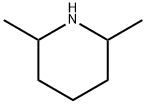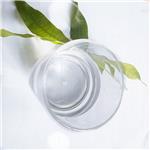
2,6-Lutidine
- Product Name2,6-Lutidine
- CAS108-48-5
- CBNumberCB6852755
- MFC7H9N
- MW107.15
- EINECS203-587-3
- MDL NumberMFCD00006345
- MOL File108-48-5.mol
Chemical Properties
| Melting point | ?6 °C (lit.) |
| Boiling point | 143-145 °C (lit.) |
| Density | 0.92 g/mL at 25 °C (lit.) |
| vapor pressure | 5.5 hPa (20 °C) |
| FEMA | 3540 | 2,6-DIMETHYLPYRIDINE |
| refractive index | n |
| Flash point | 92 °F |
| storage temp. | −20°C |
| solubility | Chloroform (Soluble), Methanol (Slightly) |
| pka | 6.65(at 25℃) |
| form | Liquid |
| color | Clear |
| Odor | at 1.00 % in dipropylene glycol. nutty amine woody bready cocoa oily |
| Odor Type | nutty |
| biological source | synthetic |
| Water Solubility | 40 g/100 mL (20 ºC) |
| Sensitive | Hygroscopic |
| Merck | 14,5616 |
Safety
| Symbol(GHS) |
 
|
|||||||||
| Signal word | Warning | |||||||||
| Hazard statements | H226-H302-H315-H319 | |||||||||
| Precautionary statements | P210-P301+P312+P330-P302+P352-P305+P351+P338 | |||||||||
| Hazard Codes | Xn,F,Xi | |||||||||
| Risk Statements | 10-22-36/37/38-20/21/22 | |||||||||
| Safety Statements | 26-36/37-16-36-36/37/39 | |||||||||
| RIDADR | UN 1993 3/PG 3 | |||||||||
| WGK Germany | 3 | |||||||||
| RTECS | OK9700000 | |||||||||
| F | 8 | |||||||||
| Hazard Note | Irritant/Flammable | |||||||||
| TSCA | Yes | |||||||||
| HazardClass | 3 | |||||||||
| PackingGroup | III | |||||||||
| HS Code | 29333999 | |||||||||
| Hazardous Substances Data | 108-48-5(Hazardous Substances Data) | |||||||||
| Toxicity | LD50 orally in Rabbit: 400 mg/kg LD50 dermal Rabbit > 1000 mg/kg | |||||||||
| NFPA 704: |
|



